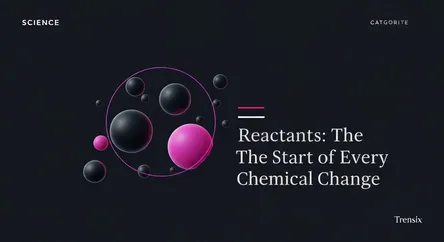Science
Reactants: The Start of Every Chemical Change

Explore reactants, the essential starting ingredients in any chemical reaction that transform to create the products that shape our world.
What is it?
A reactant is a substance present at the start of a chemical reaction. In the recipe of chemistry, reactants are the initial ingredients that are consumed and rearranged to form new substances, known as products. In written chemical equations, reactants are always listed on the left-hand side of an arrow, which points towards the resulting products. For a reaction to occur, the chemical bonds within the reactants are broken, allowing their atoms to recombine in new ways. This fundamental process can be as simple as two elements combining or as complex as the metabolic processes within our own bodies.
Why is it trending?
While a foundational concept, understanding reactants is critical to current scientific and industrial trends. Innovations in sustainable energy, for example, rely on finding efficient reactants for batteries and fuel cells. In medicine, pharmaceutical development is a constant search for new reactant molecules to create life-saving drugs. Furthermore, the push for green chemistry focuses on using safer, renewable reactants to create less hazardous products and processes. As scientists work to solve global challenges, from pollution to disease, the fundamental principles of how reactants behave and interact remain at the core of their research and discoveries.
How does it affect people?
Reactants are integral to countless processes in daily life. When you cook, the ingredients that chemically change with heat are reactants; baking soda and vinegar reacting to make a cake rise is a perfect example. The food you eat and the oxygen you breathe are reactants in the metabolic reactions that provide your body with energy. The gasoline in a car and the oxygen from the air are reactants in the combustion engine that powers the vehicle. Even unwanted processes like the rusting of iron involve reactants—in this case, iron, oxygen, and water.